A 'Top Chef' runs Los Angeles' most compelling Lebanese restaurant
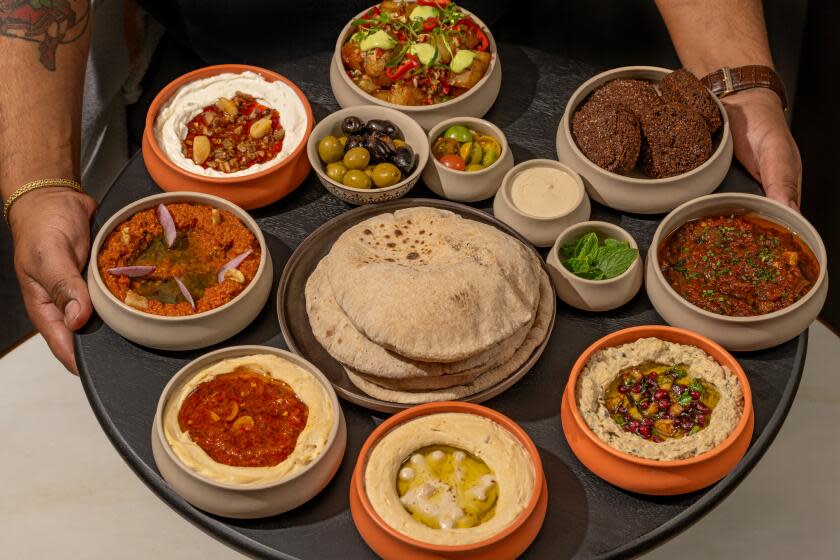
The mezze platters at Ladyhawk in West Hollywood are an armful for staff, an eyeful for customers and the swiftest, most celebratory introduction to the restaurant’s elegant Lebanese cooking.
Servers hoist table-size black-lacquered trays from the open kitchen’s counter, hurtling them through the dining room toward their destinations. There is usually a moment of hovering when they arrive, as diners scurry to push aside glasses and silverware to make space. Glanced from above, the collection of bowls and ramekins and their contents resembles an earth-toned Kandinsky: circles within circles, patterns overlapping patterns.
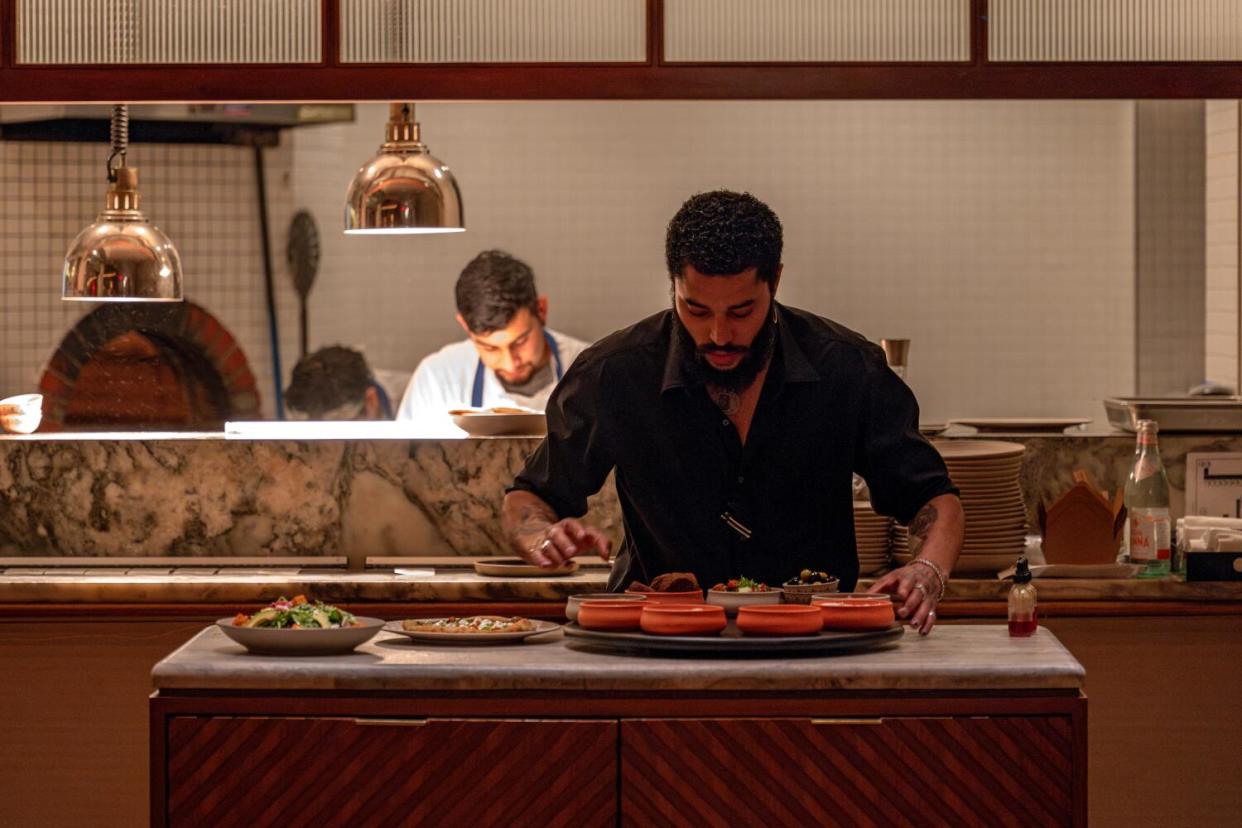
The platter spins, turntable-style. Maybe dips land in front of you first: hummus in two variations, one with a well of olive oil and mostly whole, entirely soft chickpeas and the other dolloped with chile sambal; baba ghanouj, garnished with charred and diced eggplant and pomegranate seeds; muhammara, ruddy with roasted red pepper and walnuts; and labneh, its creaminess offset with minced makdous (pickled eggplant). Each has been swirled into its bowl, appearing as if in whirling motion. It makes me want to eat them faster.
Bread for scooping dips in most L.A. restaurants comes in one of two forms: the flat, packaged kind, reheated perhaps but still nearly as appealing as paperboard, or as spheres pulled fresh from the oven, arriving so hot they steam and deflate as you rip into them. Happily, this kitchen team bakes its own rounds of pita (also known as khubz in transliterated Arabic).
Read more:Baroo changed L.A. dining for good. Can its 2.0 do the same?
Give the tray a turn for crunchier, snackier bites. Falafel is dark as rich soil on the outside, spring green with herbs on the inside; tahini sauce awaits nearby for dunking. Cubes of fried potatoes radiate garlicky heat. Be sure to grab a few buttery, briny olives before they revolve away.
The platter, which costs $110, essentially consolidates every a la carte option under the mezze section of the restaurant’s menu. The feast presumably is designed for groups to kick off their meal, but I’ve seen couples split it as dinner, with plenty of leftovers for next day’s lunch.
It’s a viable strategy, although it means missing out on other salads, bigger appetizers and a handful of entrees that make 3-month-old Ladyhawk the most compelling Lebanese restaurant in Los Angeles right now.
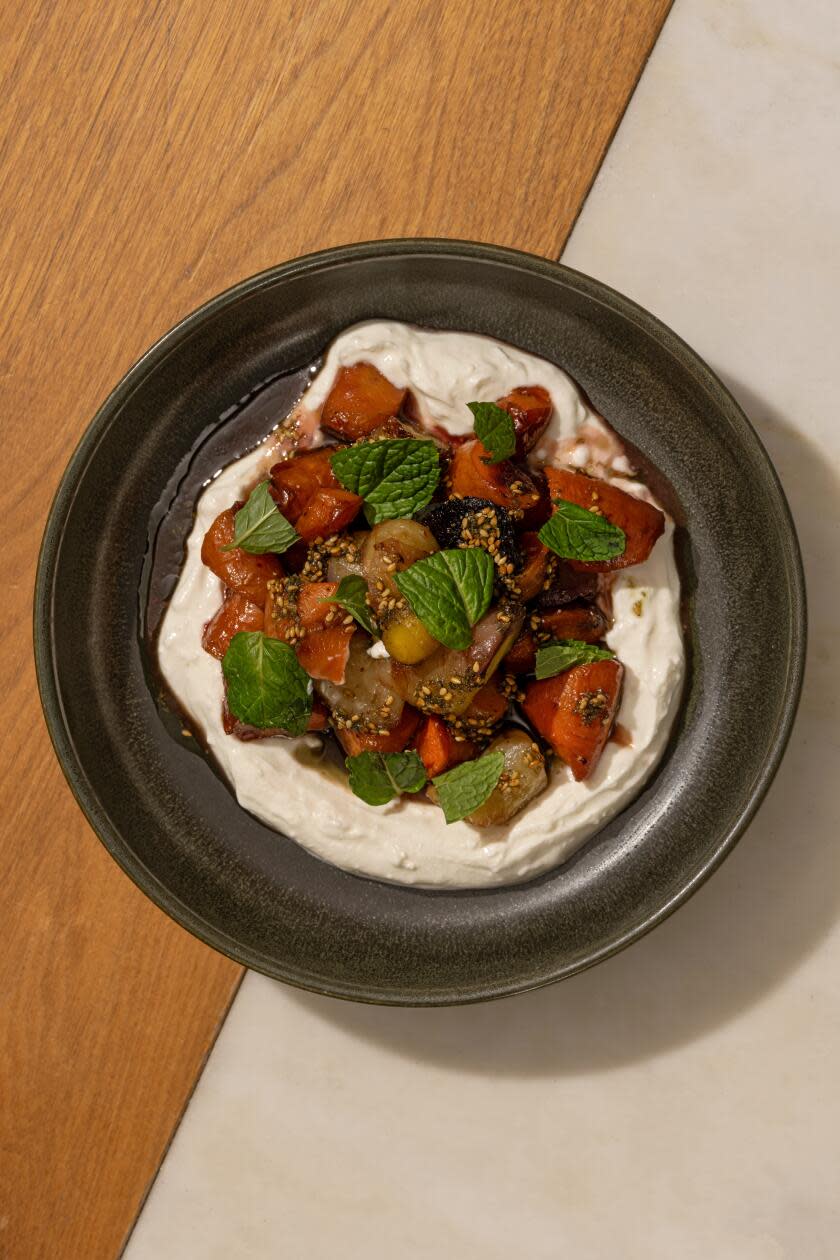
Charbel Hayek is the 26-year-old chef forging a remarkably controlled style between tradition and imagination in his approach to the cuisine. Born in Beirut and raised by a mother who is also a chef, Hayek found a breakthrough professional moment in 2022 when he won the fifth season of “Top Chef Middle East” and was the youngest chef to compete in the 2023 season of "Top Chef: All-Stars." Before his victory, he’d spent a few years as a line cook working for Josiah Citrin at Mélisse.
His return to Los Angeles marks his first time as chef and partner in a venture. Ladyhawk is on the ground floor of the Kimpton La Peer Hotel, and sure, the location gave me initial pause. Hotel restaurants are case-by-case scenarios. Too many of them enlist local or national culinary celebrities as consultants who shine their brilliance on a promising launch, only for the polish to dull when they turn their attention to other projects.
La Peer’s owners include developers and siblings Carol Braidi, Demitri Samaha and Elie Samaha, who grew up in Lebanon. They bet smart on framing Lebanese cuisine in a finer dining context than had previously existed in the city and, as evidenced in these early days, on bringing in Hayek to lead the kitchen.
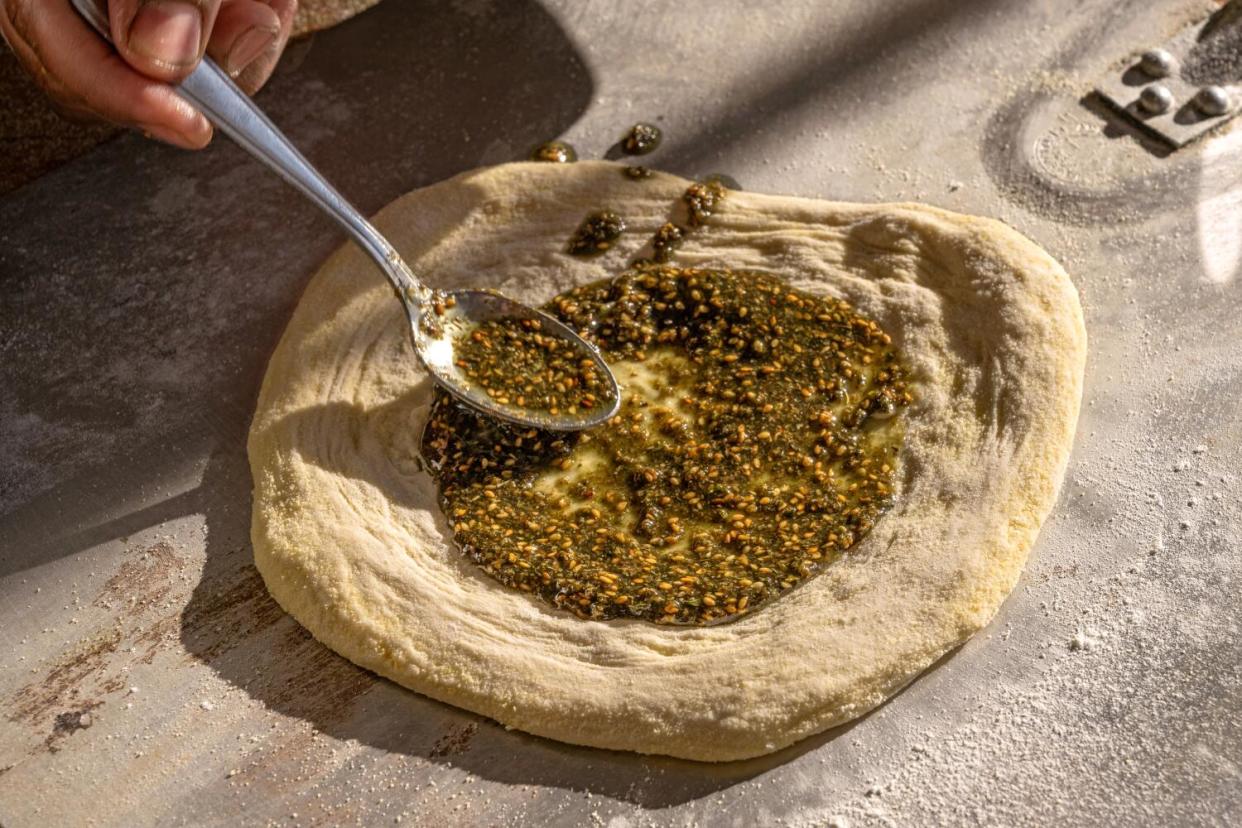
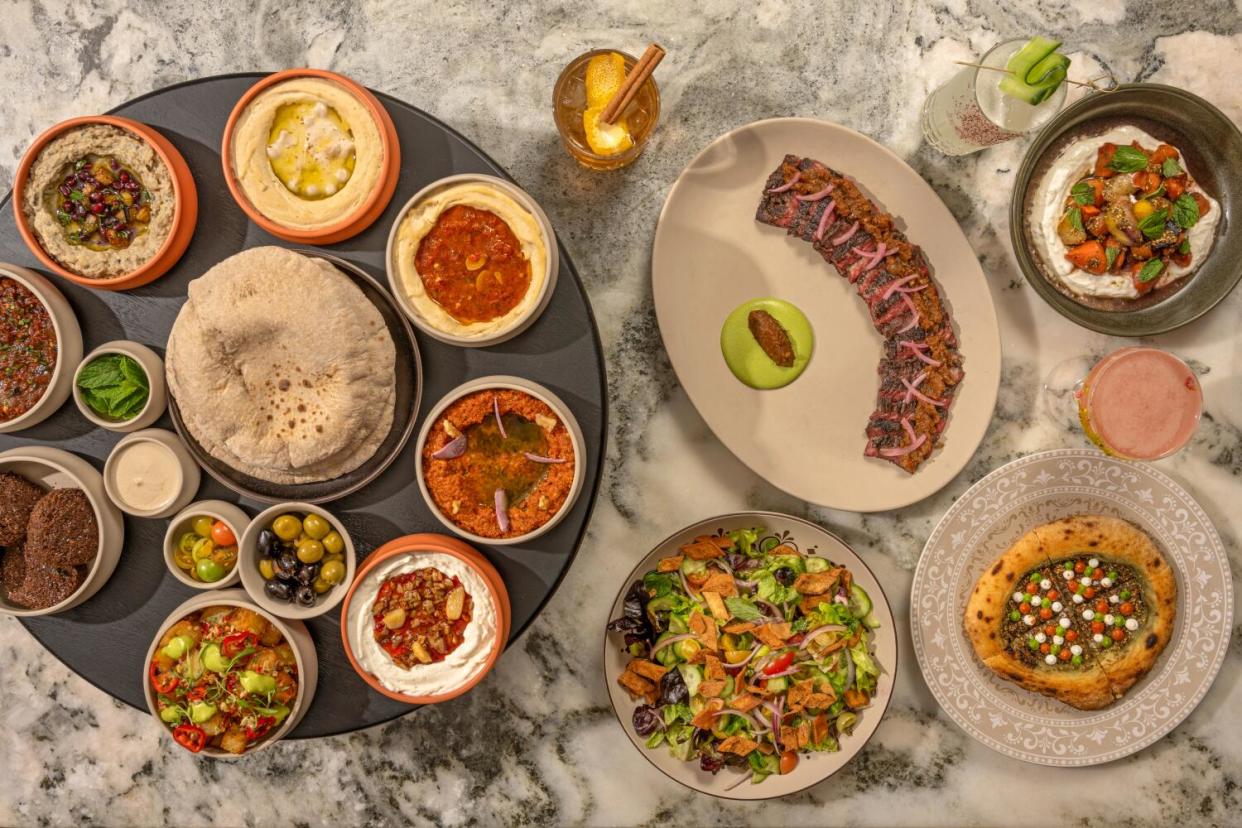
His best dishes employ creative embellishments with subtlety and respect to the food’s origins. Hummus, finely calibrated in its balance of tahini, lemon and garlic, is a thing of beauty, full stop. Same with his take on fattoush. His variation — butter lettuce rather than the usual romaine, actually ripe tomato, a judicious amount of crisped bread, the right zing of pomegranate molasses in the dressing — shows thoughtful restraint. Traditionalists would balk at his choice to swap bulghur with quinoa in the tabbouleh; I care more that the parsley has been chopped correctly so that the salad doesn’t become watery mush and that the presence of the grain is a grace note.
Za’atar man’oushe, a flatbread often sold street-side and eaten as an on-the-fly breakfast, sells itself as servers whiz it through the dining room. Hayek’s take involves decorating the surface with pretty dots of labneh and tomato and herb purees, a nod to the colors of Lebanon’s flag. Again, the additions signal a creative flex without diminishing the pungent, mulchy savor of the za’atar or the bread’s tangy warmth.
Roast chicken is a clever entrée. Besides a tidy tuft of little gem lettuces, whipped toum (garlic sauce) and tiny pickles flank the bird. These are the classic flavors in a Lebanese chicken shawarma, deconstructed here for universal appeal — an implied directive in a hotel restaurant — while still shouting out the home country.
Hayek pulls the same trick with skirt steak: shawarma lahme (the word broadly means “meat”) traditionally comes with tarator, a tahini sauce he dyes lime-green with pureed parsley, tomato and pickles.
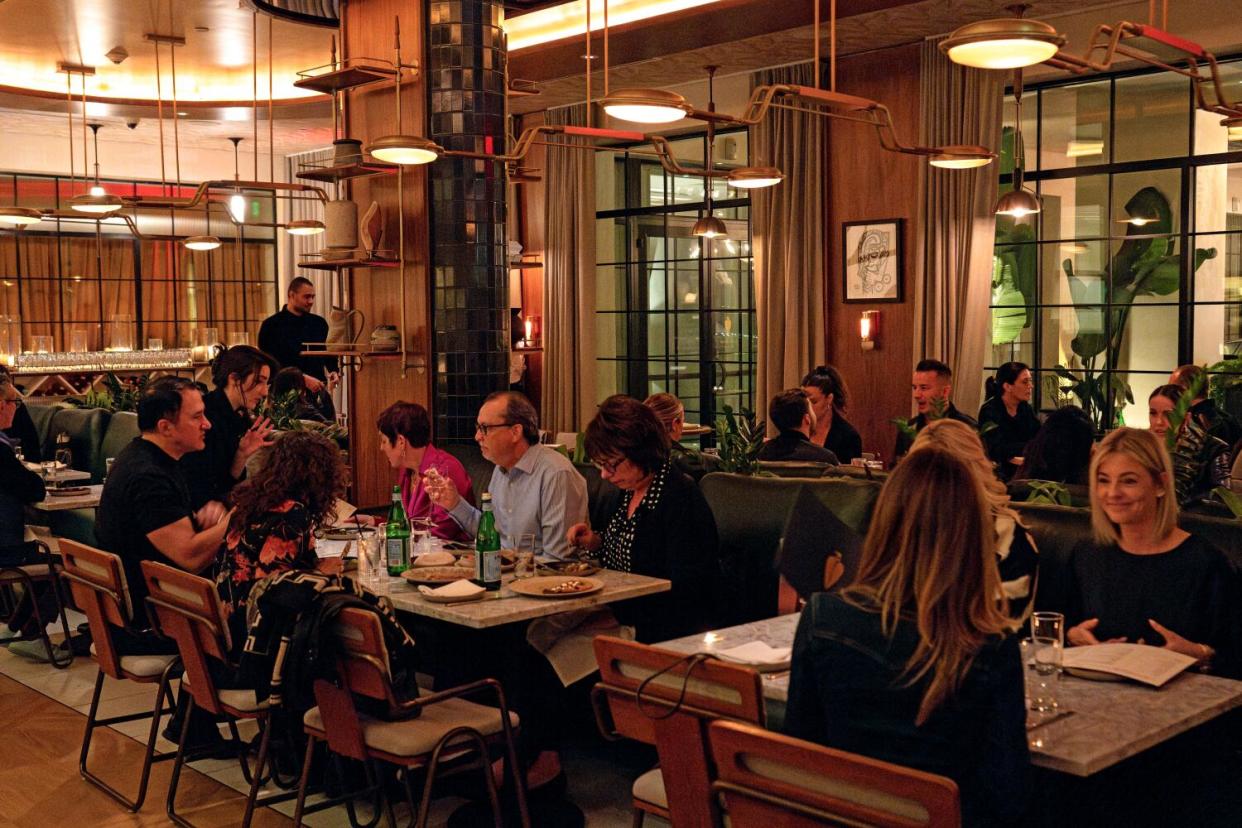
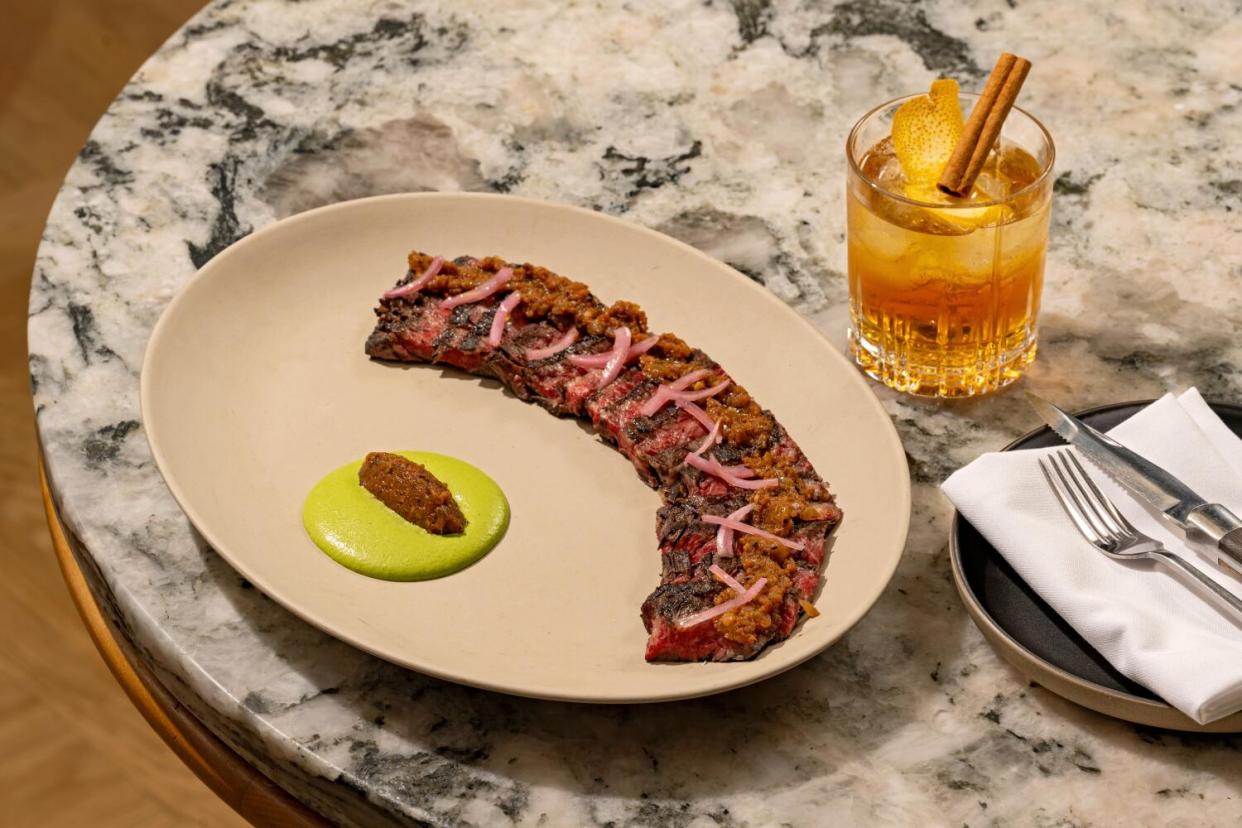
With either riff on shawarma, I ask for a side of thin, consistently hot fries.
A handsomely grilled dourade veers from the strict lexicon with its garnish of zhoug, the green Yemeni hot sauce that has become popular across the Middle East.
I’m less convinced by lamb chops crusted with dehydrated olives. Miracles can happen to lamb in the Lebanese kitchen; this is a nicety that lands with no punch. For whatever reason, other dishes that pan wider for their inspiration — grilled prawns sauced with chermoula; duck scented with honey and rose, a combination seen more frequently in desserts — have suffered from overcooking during recent meals.
I'd love to see Hayek's largely successful efforts mirrored in the restaurant's beverage program. Lebanon’s wine-making history is ancient, with modern efforts on the ascent in the last decade. The global-minded wine list should showcase some of the country's gems, including a splurge bottle or two of reds from Chateau Musar, Lebanon's most rightly celebrated winery. There is also only one fine-enough option for arak, the anise-flavored spirit that Lebanese imbibers sip alongside mezze, and a couple more finely crafted options (Touma, Brun Reserve, Musar) might go far in convincing initiates of its pleasures.
Read more:'The world's most dangerous wine': Smuggled grapes from Iran and an Armenian vintner's daring dream
But I’ll admit, as an impassioned student of Lebanese foodways, I’m slipping into niche territories. Lebanon has one of the world’s most overlooked and narrowly understood cuisines; many of its homier dishes, spurred by the country’s fertile Bekaa Valley, parallel the California growing seasons. Picture citrusy lamb stew with spring peas in the Eastern Mediterranean springtime; loubieh bil zeit, a summer comfort of romano beans simmered with tomatoes until they've reduced to a garlicky gloss; sculptural stuffed zucchini and "no-waste" omelets flavored by the squash’s excavated pulp; and, as the weather cools, a soothing pumpkin dip sparked with cumin.
Perhaps, one day, jewels like these will cross over into our professional kitchens. For now, there is Ladyhawk, a major leap forward in giving Lebanese food in Los Angeles a bit of glamour and, more vitally, a mother lode of gracious skill. I've noticed the dining room grow ever fuller since its opening in November. Clearly, an appetite is building.
Read more:These are the 101 best restaurants in L.A.
This story originally appeared in Los Angeles Times.
